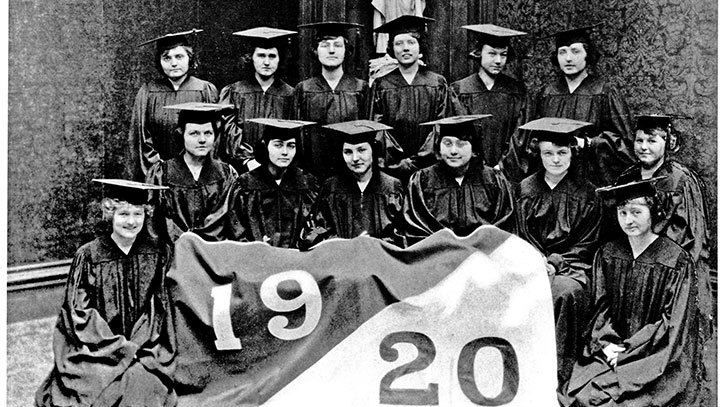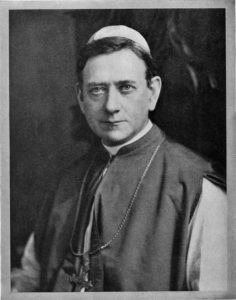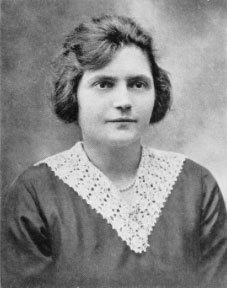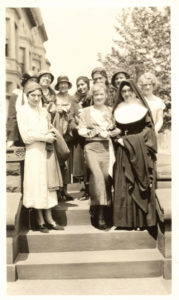Twelve pioneering students, one little gray building and a wealth of ambition. The humble beginnings and bold aspirations of St. Joseph’s College for Women a century ago became the foundation of a world-class institution that graduates more than 1,500 students annually at campuses in Brooklyn and Long Island and counts 37,000 alumni worldwide.
Founded by the Congregation of the Sisters of St. Joseph, the College spent its first 10 decades honing and perfecting its craft, providing access to excellence and enabling women — and eventually men — to grasp and then reach their full potential. History reflects St. Joseph’s as an institution built on tradition, motivated by innovation and strengthened by a desire to adapt to changing times.
1916-25 • Launching Excellence
Amid the chaos of World War I and a wave of social change across the country, St. Joseph’s College for Women opened its doors to students for the first time on Oct. 2, 1916. The long-awaited school — a product of the progressive Sisters of St. Joseph — called St. Angela Hall on Washington Avenue home until 1918, when classes shifted to a Clinton Avenue mansion that came to be known decades later as Burns Hall. By the time St. Joseph’s had conferred degrees on its first 14 graduates in 1920, that inaugural class had gained the right to vote, lost the right to drink, survived the world’s most lethal flu pandemic and had borne witness to our nation’s involvement in the deadliest war of its time. Under the direction of its first two presidents — Bishop Charles E. McDonnell, who helped found SJC and presided over it until his death in 1921, and Archbishop Thomas E. Molloy — St. Joseph’s added a chapel, library and gymnasium, and saw its graduating class jump 17-fold by the end of its first decade.
Twelve Pioneers
Amalia Simonetti already was touted as the class’ soon-to-be first physician. Marjorie Nolan was a gifted pianist and harpist, and the group’s go-to writer. And in line with the vernacular of the time, Mary Moore was simply “as merry as the day is long.”
The St. Joseph’s College Class of 1920 was an eclectic group of young women determined to leave their mark on the world. As the school’s founding class, the women left their impression on St. Joseph’s as the “Twelve Apostles.” Before graduation, the class had grown to 14, adding two transfer students.
Devoted to school and country, the group formed numerous clubs, including the Literary Society, the Dramatic Society and the Glee Club, and proudly helped raise hundreds of dollars in the United War Drive after the United States entered World War I in 1917.
The Class of 1920’s Adaline Canning was a distinguished thespian among her peers. Ethel Kellam was a talented high jumper, and as the class artist, she drew portraits of the College’s professors. Lillian Roche was looking forward to a career as a chemist.
The class also had its Latin language expert, Marie Uhlinger; its “living encyclopedia,” Annunciata Scibilia; its skillful dancer, Anna McDonald; its cheerleader, Marion Clarke; and its class “mother,” Constance Doyle. Adaline Canning’s acting was a sight to be seen on stage, Marie McConnell was tabbed as the “true friend” among her classmates and Helen Parks served as editor of the first edition of the College’s yearbook, “Footprints.”





